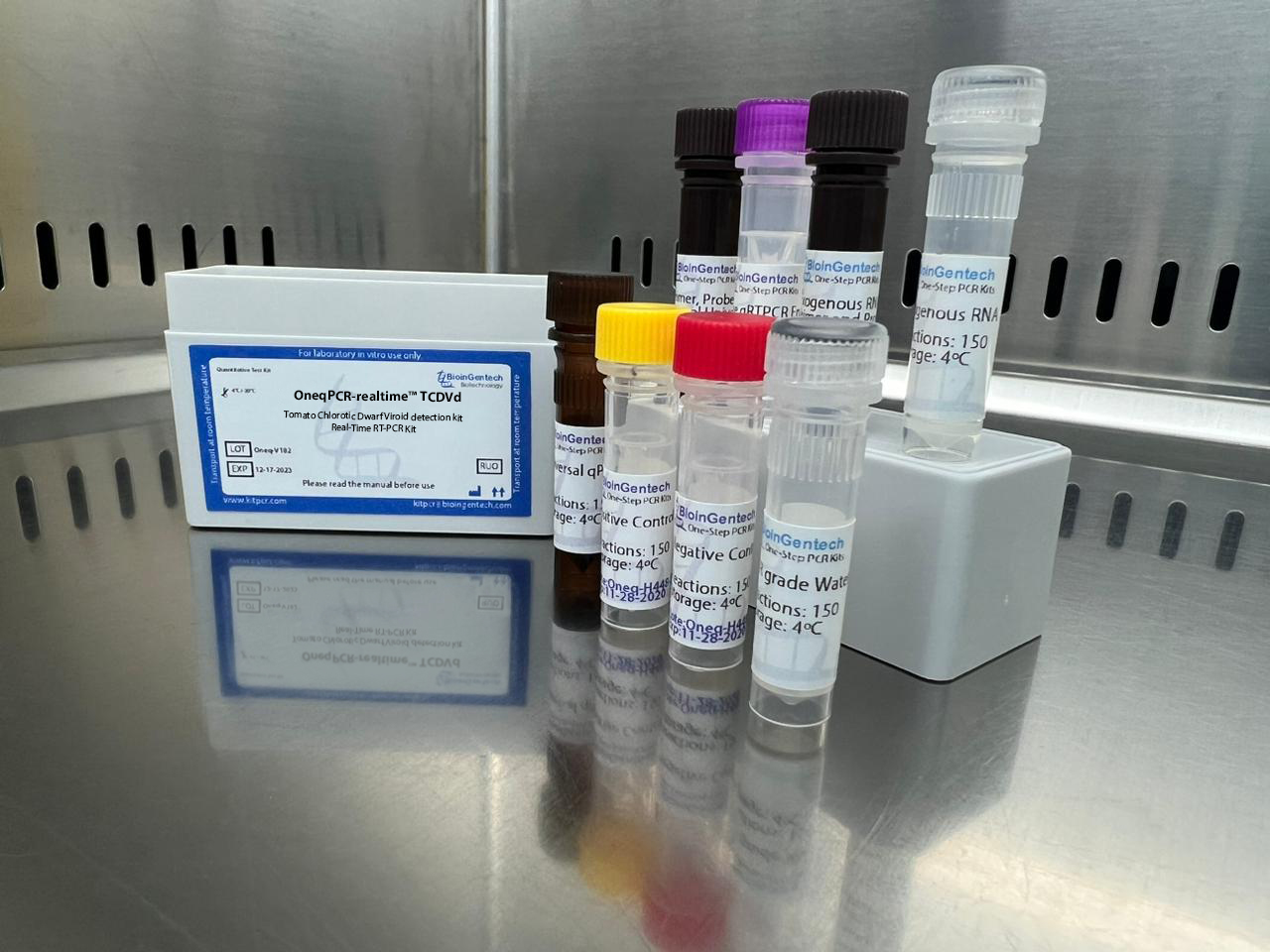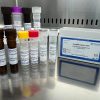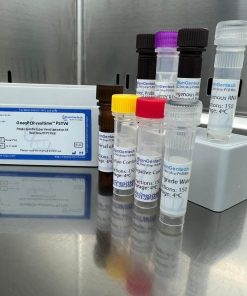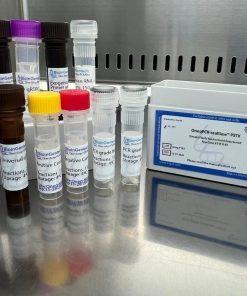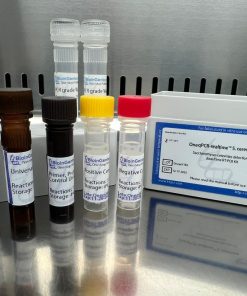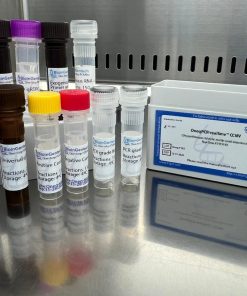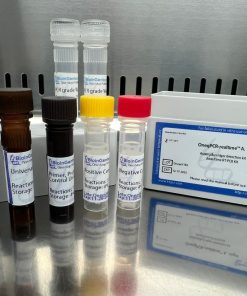Tomato Chlorotic Dwarf Viroid detection kits
| One-Step | 50 – 100 – 150 reactions |
Tomato chlorotic dwarf viroid (TCDVd) is a Pospiviroid which has a circular single stranded RNA molecule with 360 nucleotides. In general, pospiviroids use the plant cell nucleolus to self-replicate (i.e. multiply in number) and accumulate. The movement of viroids within an infected plant is via plasmodesmata, from cell to cell, and via phloem throughout the plant. Viroids have been known to infect both herbaceous and woody plants, including many ornamentals; many of them are symptomless carriers. TCDVd is known to occur in field and greenhouse-grown tomatoes in Europe. The symptoms expressed by infected tomato plants vary depending on the type of TCDVd strain, tomato variety, age of the plant, plant vigour and climatic conditions. Initial symptoms appear as reduced growth and yellowing of leaves (chlorosis) in the young terminal parts of the plant, 3-6 weeks after initial infection. With time, the infected plants may become stunted, chlorosis may become more pronounced or turn to bronzing and/ or purpling; leaves may show necrotic lesions and become brittle and distorted. The detection of TCDVd infection by symptoms is challenging since many other viroids and viruses can produce similar symptoms. Therefore, detection using PCR is the most effective method available.
| One-Step | MANUAL | MSDS |

